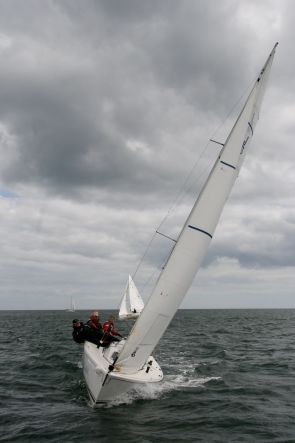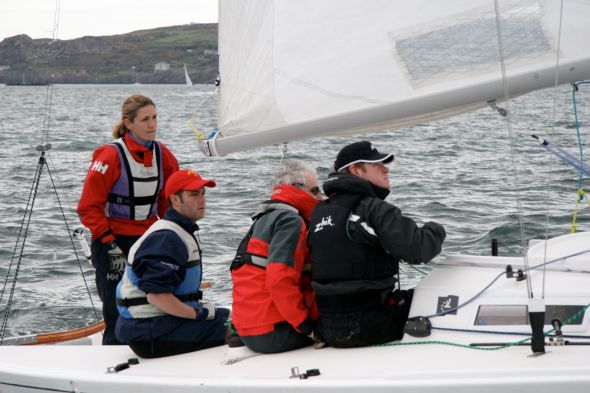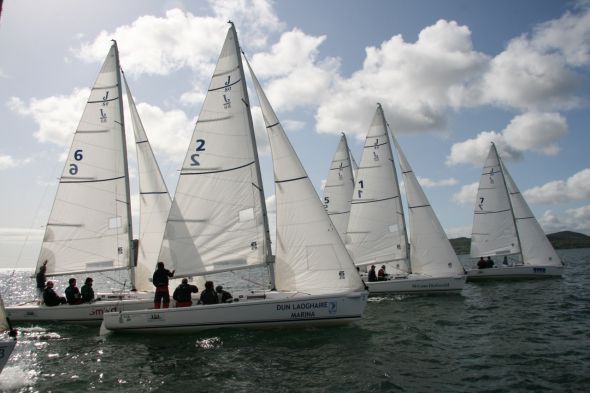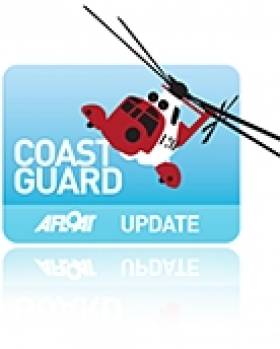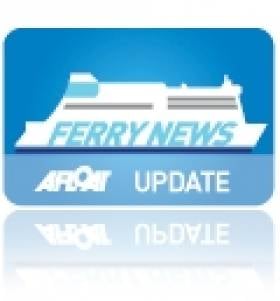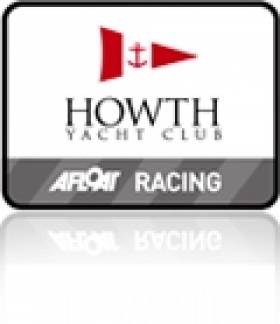Displaying items by tag: twitter
Dog Tweets Thanks To Rescuers After Perilous Atlantic Cliff Fall
#TwitterDog - A little dog who survived a 90-metre fall into the Atlantic Ocean on Sunday 3 August has thanked his rescuers - via his own Twitter account.
TheJournal.ie has much more on the story of Vimes the dog, who was plucked from the water below Lookout Point in Co Clare by the Kilkee unit of the Irish Coast Guard on Sunday afternoon
Vimes was very fortunate to avoid sustaining any injuries as he fell down the cliff face, as The Irish Times reports, and is now safe at home making a full recovery.
Dublin Bay Buoy Is Live-Tweeting The Weather
#DublinBay - Twitter users can now track live weather updates from a buoy in the middle of Dublin Bay.
The @DublinBayBuoy account is tweeting at regular intervals with the average wind speed, gust speed and wind direction on the bay, as well as the current wave height and water temperature.
And it's all been made possible thanks to an array of sensors installed on the buoy by the Commissioners of Irish Lights to record live meteorological ocean data.
The Twitter bot should come especially handy at this weekend's Battle for the Bay among some the world's top kitesurfing talent.
Online Petition Challenges Cuts to UK Coastguard Network
A campaigner on Twitter is encouraging supporters to sign an online petition against the closure of coastguard stations across the UK.
So far almost 7,000 signatures have been added to the petition started by Twitter user @Coastguard_SOS in protest at the UK government's plans to streamline the Maritime and Coastguard Agency's nationwide network of rescue centres from 19 to 11.
As previously reported on Afloat.ie, campaigners in Scotland have made a desperate plea to save the Clyde station from closure in a public consultation.
Northern Ireland's rescue command centre at Bangor on Belfast Lough is among those saved from the chop following a review of reform proposals this past summer.
But concerns remain that resources will be stretched too thin if fewer stations are responsible for broader areas.
"The revised proposals are also unacceptable not least on the basis that vital local knowledge will continue be lost and therefore lives will continue to be out at risk on our coastlines," the petition warns.
The Ferry Fortnight to "Seas the Opportunity"
This weekend sees the start of the National Ferry Fortnight (14-28 May) an initiative to heighten consumer awareness of the extensive ferry network operating to and from the UK, writes Jehan Ashmore.
Central to the National Ferry Fortnight campaign will be a series of promotional offers on ferry routes listed on www.discoverferries.com. The campaign logo will be featured on ferry members' own advertising and website campaigns to highlight the UK's broad network of over 50 routes.
For the first time, ferry passengers will be encouraged to blog and twitter their family and friends when crossing the seas.
Investment in recent years of more modern and versatile fleets has seen an increase in people travelling by ferry, with some 35 million passengers, eight million cars and over 140,000 coaches carried in 2010.
The event is organised by the UK-based Passenger Shipping Association (PSA) and members include Irish owned-ferry operators: Fastnet Line (Cork-Swansea), Celtic Link Ferries (Rosslare-Cherbourg) and Irish Ferries which operate on routes to Wales and France.
In addition the following PSA members (operating between them on Irish Sea, English Channel and North Sea services) are to participate: Brittany Ferries, Condor Ferries, DFDS Seaways, Hovertravel, Isle of Man Steam Packet Co. (IOMSPCo), LD Lines, P&O Ferries, Red Funnel, SeaFrance, Stena Line and Wightlink.
HYC use Twitter & Ustream for live event coverage
Howth Yacht Club continue to march ahead as early adopters of new media, streaming details from their HYC Helmsman's Championships in real-time over the web. Using a combination of live tweets from Twitter and streaming vide on UStream (courtesy of Noel Davidson) the club was able to present a live-action sailing feed from their racing area.
10 teams from HYC competed in the HYC Helmsmans Championship. The teams were divided into 2 heats with 5 teams racing on Saturday morning and 5 teams racing on Saturday afternoon. Both heats were hotly contested and 4 teams from each heat progress through to the final on Sunday.
Heat 1 was won by Michael Duffy, followed by Emmet Ryan in 2nd, Scott Flanigan in 3rd, Garrett May in 4th and John Faller in 5th. Heat 2 was won by Laura Dillon, followed by Alistair Kissane in 2nd, Dermot Skehan in 3rd, Paul McMahon in 4th and Jenny O’Leary in 5th.
The top 8 teams progressed through to the finals on Sunday and the final top 3 results were:
1. Laura Dillon and crew
2. Garrett May and crew
3. Emmet Ryan and crew
Dillon successfully defended her title. Full blow-by-blow details from the racecourse are available both on the HYC_Events Twitter stream and Noel Davidson's Ustream channel which houses the video.
